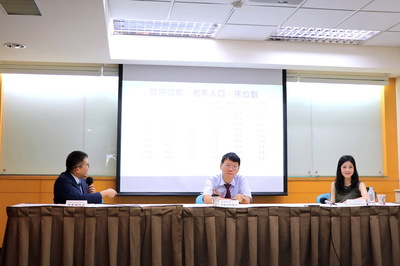Does testing for COVID-19 lower the fatality rate? Results of NSYSU and NYMU’s research published in Scientific Reports





The total number of confirmed COVID-19 cases has topped 20 million and the death toll has surpassed 700,000. As the number of cases and the death toll is continuously rising, Taiwan faces a risk of a second wave of infection. National Sun Yat-sen University and National Yang-Ming University formed a research team to study the risk factors influencing the mortality rate of COVID-19 by big data analysis. The results of the team’s study were published in Scientific Reports, an open access journal from the publishers of Nature, to help the world’s governments decide whether to implement widespread testing for COVID-19.
Having analyzed global big data, the research team discovered that the COVID-19 mortality rate was negatively associated with COVID-19 test number, government effectiveness score, and the number of hospital beds, and positively associated with the proportion of population aged 65 or older and transport infrastructure quality score. Furthermore, the negative association between Covid-19 mortality and test number was stronger among countries with lower government effectiveness scores, younger populations, and fewer hospital beds.
Assistant Professor Li-Lin Liang of the Department of Business Management, NSYSU, indicated that the team analyzed data for 169 countries. According to the World Development Indicators of the World Bank, Taiwan ranked top 14% for the government effectiveness score. Moreover, Taiwan ranked top 23% for the percentage of the old population and top 16% for the number of hospital beds. These figures imply that Taiwan has an effective government, a rather aging population, and a high number of hospital beds. It is yet to be studied whether public open testing can lower the fatality rate of COVID-19 in Taiwan.
Assistant Professor Liang explained that for all countries the average COVID-19 mortality rate was 3.7%. The average mortality rate in high-income countries was 4.9%, likely due to the aging population. Taiwan, however, had a mortality rate of just 1.5%, which was lower than the predictive value of the model. The prevention measures undertaken by the Taiwanese government, citizens’ health management, and the high-quality health care services are important factors contributing to the low mortality rate in Taiwan.
Professor and Dr. Chun-Ying Wu, Director of the Division of Translational Research of the Taipei Veterans General Hospital and Director of the Institute of Biomedical Informatics, National Yang-Ming University, highlighted that most research on COVID-19 mortality rate has focused on patient levels. The results of such studies showed that the mortality rate was the highest among the elderly with pre-existing conditions such as diabetes or hypertension. However, because of the small sample sizes, the results may not be representative. Thus, NYMU Research Center for Epidemic Prevention and the research team of the NSYSU College of Management analyzed big data of 7.5 billion population of 169 countries, searching for the indicators predicting the mortality rate of COVID-19.
Link to the article: https://rdcu.be/b5O3R




